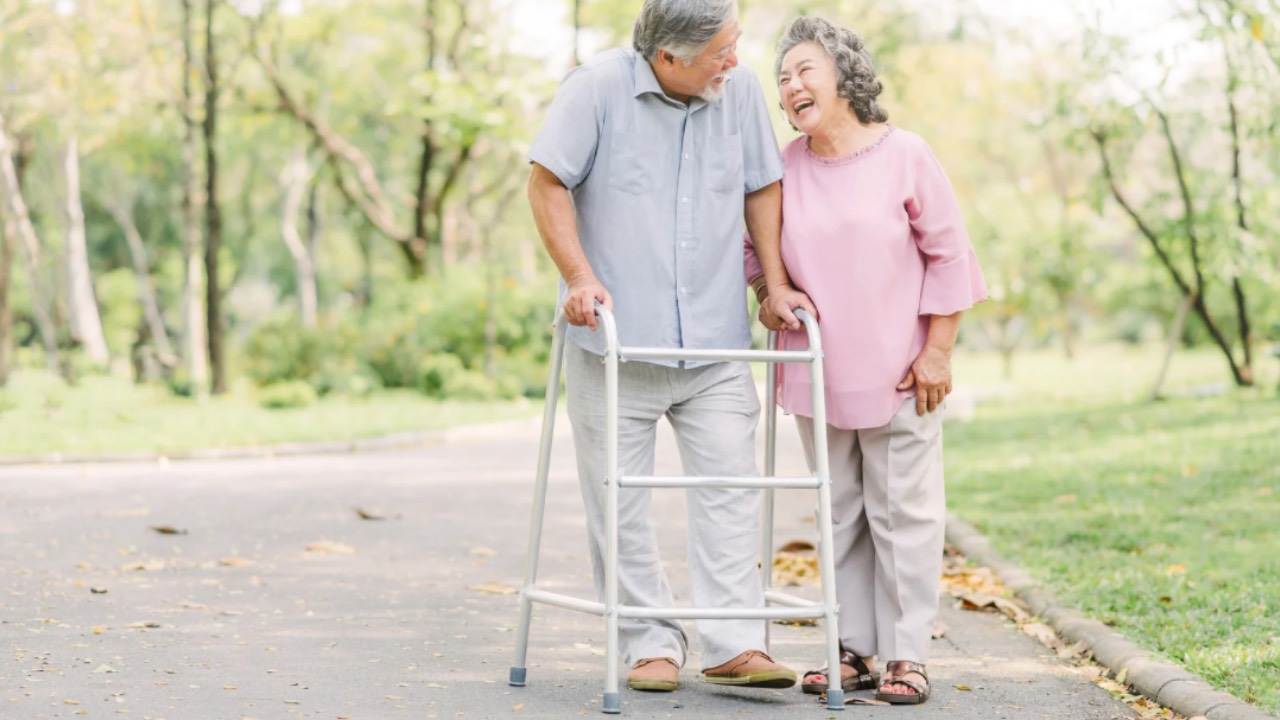3 Common Crimes When Using a Walker
Feb 26, 2025
As a physical therapist, too often I see people use their walker both in unsafe as well as in inefficient ways. Unfortunately I come across this both in the physical therapy clinic, as well as out in the community.
Luckily, these aren’t difficult corrections to make. The biggest hurdle is changing the habit, if these are things you have been guilty of for a long time.
I will expose the 3 most common “crimes” people commit when using their walkers, why they are detrimental, and how to quickly fix each one. Without further ado:
The 1st crime: not having your walker properly fitted to your height.
Why it’s bad: If your walker is too low, this causes you to hunch over, which adds stress to your joints and muscles, and negatively impacts your walking mechanics. If your walker is too high, this causes you to stand too far away from your walker, which isn’t safe, and it also causes you to hunch over as well.
The fix: To check whether your walker is set at the correct height for you, you first need to step inside the frame of your walker, and stand upright, as tall as you can. Drop one arm down at your side, staying up tall. The handle of your walker should hit right where your wrist bends. If it doesn’t, sit down and adjust the walker height, and then run the test again. You can watch a video of me showing how to do this: watch it on Instagram by clicking HERE or watch it on Facebook by clicking HERE.
The 2nd crime: sitting “too soon,” or not squaring up prior to sitting down.
Why it’s bad: This is an unsafe habit that puts you at risk for missing the chair and falling to the ground.
The fix: You want to take your time and turn all the way so the chair (or couch or bed, whatever it is that you are about to sit on) is directly behind you. The phrase “take your time” is actually important here: I have seen a lot of people hurry to sit down because they are tired from activity, and they do so at the risk of their own safety, because they don’t take the time to ensure they are in the proper position to sit before doing so. You also want to back all the way up - until you feel the chair hit the back of both of your legs. This ensures that when you go to sit down, the chair or couch is directly behind and directly underneath you, so that you won’t end up on the corner or edge, where you are running the risk of sliding or falling off.
The 3rd crime: holding onto your walker when you stand up from sitting, or when going to sit back down from standing.
Why it’s bad: Your walker isn’t rooted down into the ground. Even if your walker has brakes that are locked, it still isn’t tethered to the floor. This means that if you pull on your walker, it will just lift up and move right along with you. This causes reduced stability, uncontrolled descent into sitting, and even puts you at risk for a fall.
The fix: When you go to stand up, place at least one hand, or both hands, on your chair before standing up. Ideally, you will only use your hands for a bit of balance support as you stand up. If you do need to use your arms to help push you up into standing, you can safely do that, since your hands will be pushing from the sturdy surface you’re sitting on (whether that’s your bed, or a bench, or a chair). Once you’re standing upright, go ahead and grab onto your walker, and off you go. Likewise, before you sit down, reach at least one hand, or both hands, back to the chair or bed that you’re going to sit down on. Then go ahead and sit, using your hands for balance only if you can, or if needed, you can safely use your arms to help control your descent.
Note: In the event that you cannot push up from the surface you are sitting on, perhaps getting out of a car, for example, have someone push down on your walker to keep it stable so that you can use it to pull yourself up. See the photo below for an example of this:
If you or a loved one use a walker to get around, double check to make sure you’re not committing any of these 3 very common crimes! Adjust your walker so it’s the proper height, take your time before you sit to ensure you’re squared up, and always have your hands on the surface you are standing up from or about to sit down on (rather than having your hands on your walker when you stand and sit).
To read more about walkers as well as other assistive devices, click HERE.
Never miss a post!
Join my mailing list so you'll always be first to know when a new blog post is live!
I won't send spam. Unsubscribe anytime. Terms & Conditions apply.



